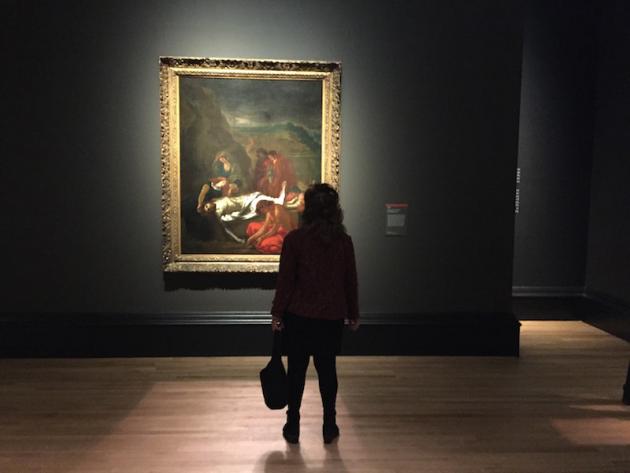Delacroix and the Rise of Modern Art, the National Gallery London’s latest feature exhibition, sets out to give visitors the opportunity to (re)discover this important hugely influential 19th century master and to establish his enormous influence by exhibiting his works alongside those he influenced: household names such as Cezanne, Renoir, Gauguin and Matisse.
Eugene Delacroix (1798-1863) is regarded as the leader of the French Romantic school. His use of optical colour and expressive brushstrokes separated him from his contemporaries, which included his chief rival Ingres. He was frustrated by the French academic system that insisted students had to master drawing in monochrome before they could use colour. As a result he largely taught himself to paint by copying masterpieces on public display in Paris. Consequently, his own inspiration came from the 17th century Flemish painter Rubens and the Venetian Renaissance. His subjects came from the bible and literature and he travelled to North Africa in his quest for exotic inspiration. His paintings were often large scale and his use of colour, brushstroke and passion filled the canvases.
His most important works are in Paris at The Louvre who does not allow them to travel and none of his best-known works are on view or if they are they are either smaller versions or copies by other artists such as a cabinet sized The Death of Sardanapalus (73.7 x 82.4 cm as against The Louvre’s 3.92 x 4.96 m) and Manet’s version of The Barque of Dante. The exhibition suffers as a result. The Lion Hunt is a delight as is The Women of Algiers in their Apartment, although a much larger version is in The Louvre. There are simply not enough works by Delacroix in the show. A silent film plays in an annexe showing Delacroix’s public commissions and the murals he made for the Salon du Roi in the Palais Bourbon, the Galerie d’Apollon, Musée du Louvre and for the Chapelle des Saints-Anges in the Church of Saint-Sulpice. Organised thematically, his works are exhibited alongside those artists he influenced.
Consequently, an exhibition that sets out to educate and inspire visitors to the greatness of Delacroix and to be billed as the first UK Delacroix exhibition in over 50 years, only succeeds in over powering him with the works of his disciples. Out of 60 works, a little over a third are by Delacroix. You almost have to search for works by him and they are not all given the most prominent walls except perhaps The Lamentation. It’s as if the curator is saying ‘I know we aren’t showing his best works but honestly he is a great artist – look at all the other great artists who looked up to him and admired him’. Don’t get me wrong there are some superb paintings in the exhibition. Ordinarily, I would be delighted to see Odilon Redon’s Pegasus and the Hydra and Saint George and the Dragon by Gustave Moreau. Van Gogh’s version of Delacroix’s Pieta is a showstopper in its own right and the Gauguin Still Life with a Sketch after Delacroix is spectacular and it’s very interesting to see it hung next to the actual Delacroix sketch of The Expulsion of Adam and Eve from Paradise, which incidentally is the only work by Delacroix in the last room. All of this makes a very interesting visual essay. Once again though the curator’s vision takes over and puts him centre stage instead of the artist. Mind you, if we’re thinking of great modern artists influenced by Delacroix where is Picasso’s 1954 Women of Algiers series?
Words/Photo: Sara Faith © Artlyst 2016 *** 3 Star
Delacroix and the Rise of Modern Art: National Gallery, London 17 February – 22 May 2016

